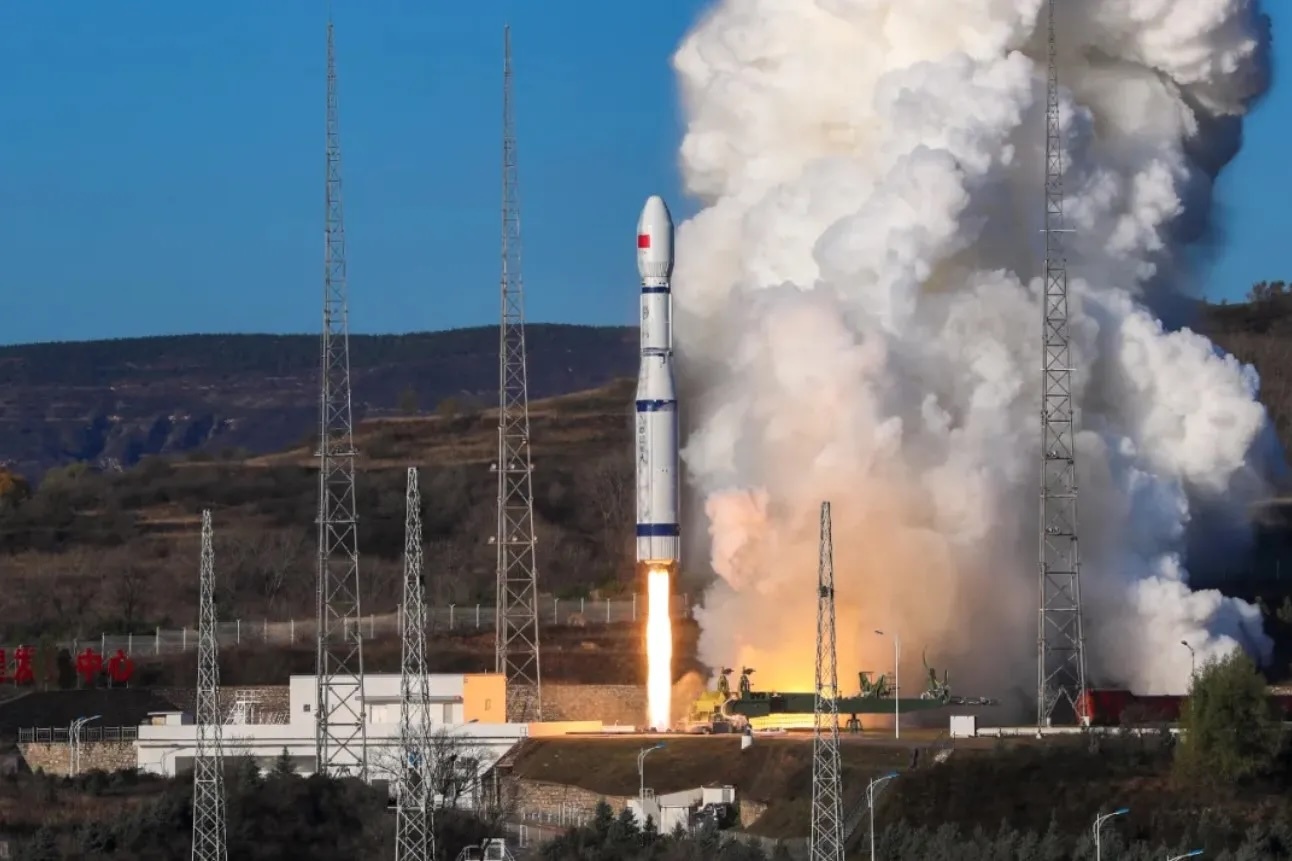22.10.2024

Liftoff of a Long March 6 rocket, carrying a trio of Tianping-3 satellites into orbit, on Oct. 22 (UTC) 2024. Credit: Ourspace
HELSINKI — China launched a trio of satellites late Monday for ground radar equipment calibration and other measurements.
A Long March 6 rocket lifted off from Taiyuan Satellite Launch Center, northern China, at 8:10 p.m. Eastern, Oct. 21 (0010 UTC, Oct. 22). The state-owned Shanghai Academy of Spaceflight Technology (SAST) announced launch success, revealing the payloads to be the Tianping-3A (01), B (01), and B (02) satellites.
The Tianping-3 mission is described in Chinese state media reports as a single satellite. However, as noted by SAST, three discrete satellites were launched.
“The satellite is mainly used for ground radar equipment calibration and radar cross section (RCS) measurement,” Chinese state media reported. “It will provide support for ground optical equipment imaging experiments and low-orbit space environment detection and monitoring experiments, as well as offer services for atmospheric space environment measurement and orbit prediction model correction.”
No images or further information on the satellites was provided. The satellites could be used for purposes related to defense, weather forecasting, and scientific research. These can help verify radar performance, calibration for target detection, weather radar calibration, space debris tracking, or tracking atmospheric phenomena.
Tianping-3 satellites can be used as benchmarks to compare and validate the measurements of ground-based radars, offering highly accurate measurements of their RCS. The satellites may have corner reflectors or transponders on board to provide a strong and well-characterized signal to ground-based radars. This signal helps in calibrating the radar’s performance, such as its power levels, antenna alignment, and other critical parameters.
SAST provided the Long March 6 rocket for the mission. The 29-meter-long, three-stage rocket uses a single YF-100 kerosene-liquid oxygen engine on its first stage. The launcher is one of China’s new generation Long March rockets and had its first launch in 2015. The Long March 6 has launched 13 times, all successfully. It bears little resemblance to the much larger Long March 6A, which features an elongated first stage, two first stage YF-100 engines, and four solid rocket boosters.
Chinese launch activity
Tuesday’s mission was China’s 50th orbital launch attempt of 2024. It followed last week’s launch of the Gaofen-12 Earth observation satellite and a second group of 18 satellites for the Qianfan/Thousand megaconstellation.
China is preparing to send the Shenzhou-19 crewed mission to the Tiangong space station around the end of October. The crew spacecraft atop of a Long March 2F rocket was rolled out to its pad at Jiuquan Satellite Launch Center on Tuesday.
Three as yet unknown astronauts will join the Shenzhou-18 crew aboard Tiangong and take over residency of the space station. The Tianzhou-8 cargo resupply mission is expected to follow in November, launching on a Long March 7 rocket from Wenchang.
The country appears to be falling well short of a target of 100 launches for the year, according to plans announced by China’s state-owned main space contractor CASC in early 2024. Both CASC and the country’s commercial launch providers are launching at a slower rate than estimated.
Quelle: SN
